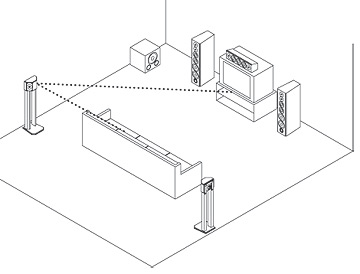- Joined
- Jan 27, 2019
- Messages
- 7,332
- Likes
- 12,292
I found the Griesnger work illuminating, one of the most helpful on this subject. I think it might have been suggested by Duke. Checked—yep—January 9 from Duke. It was a YouTube lecture/presentation:
I need to watch again for a refresher. I suspect everyone here has seen it or studied his other works, but if not, well worth the 20 minutes or so for sure.
That was interesting (though at sometimes a bit rushed IMO)...
Griesnger's talk about "proximity" of sound being "engaging" meshes pretty well with my experience or tastes. Though his specific talk wasn't exactly concerning the following, it does remind me of the point made about advantages I get from my 2 channel speaker set up vs surround:
I think it's quite common that, as in my own case, for sheer practicality surround systems are often not placed in the positions many audiophiles prefer for 2 channel listening.
So my surround speakers are on the walls, my L/C/R speaker flank my projection screen, whereas my 2 channel speakers are pulled out "audiophile style" in to the room to form the perfect listening triangle.
One of the benefits of the closer positioning of the stereo speakers is "proximity" to the sound, IMO. The speakers are capable of casting a VERY deep soundstage that can seem to go waaaay back beyond the room borders, for sounds in a soundstage that are placed in the distance. But on the other hand, sounds that are mixed right "up front" occur at the front plane of the speakers, and so their "proximity" is very close to me, and attention grabbing. This means that not only is there a wide variety of depths and layers of imaging that happens when switching between recordings, but recordings that contain a wide layering of sound - e.g. from right up close say sounds panned left and right at the speaker plane, to sounds waaaay back in the soundstage, can therefore create a tremendous impression of layering and depth, from "really close right next to me" to "very far away."
I don't get this from my surround system if only because, of necessity, the L/C/R speakers are significantly further away and even the closest mixed sounds start at quite a distance from me, and thus are never as attention grabbing and I don't get the same sense of the whole room opening up in space, from close to me to far away.
(And that's also why, despite having heard plenty of surround music, I still find my 2 channel set up can sound more convincing and enveloping in some respects. For some live performances the imaging actually feels more like being among the audience, hearing through a real acoustic space, to the performers. Where there are other times, other tracks, where I might prefer the surround immersion of the surround system).


